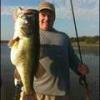Just to be sure I wasn't misleading anybody, I asked Ralph Manns how fast a bass could adjust to depth change since he has studied this subject way more than I have. Here is his reply to me.
Quote: Unless there has been some recent scientific study with which I am not familiar, (I'm now pretty much out of the loop for current science reports) we only have data on a few other species. Black bass capabilities are likely similar, but not necesarily the same.
As I recall, yellow perch are able to compensate for about a foot of pressure change per hour. Within an hour for ever foot of base-depth change they will be adjusted to the new depth. I don't consider this fast enough to significantly allow rapid changes in acclimation depth. Likely, the other site author was merely noting that bass can quickly go up as much as 20 feet to the surface. but, such moves are almost always accompanied by an almost immediate return to a depth with significantly higher pressure.
LTBama has images of bass coming up from 25 feet following fish hooked while vertical spooning. The followers turn back at 10-7 feet from the surface. while the percentage change in pressure per foot lessens as you go deeper, 20 feet appears to be about the maximum range of normal vertical movement for the black basses.
More realistic info is that during the one year I dove and observed bass, they seldom changed base-depth by more than a foot or two, staying in the same depth range for months at a time. this was in lake Travis, and we saw fish at all depths from just under the surface to 40 feet down. Individual fish tended to stay at their own depths, but all depths seemed to hold some bass. End Quote.
Raul, does this sound like the kind of depth change you would consider extremely fast? I don't consider a foot per hour fast but you might since it all relative to what we consider fast.
Fourbizz I have seen at the most 15 feet moves up where I fish for LM and 20-25 feet for spots and hybrids but Ryan Coleman who fishes much clearer water than I do most of the time told me he had a 10lb LM come up and chase his jig to the surface in 30 feet of water and he saw it all on his depthfinder. But those fish return back down quickly as Ralph stated.










